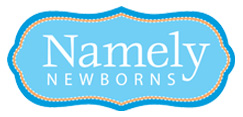Baby Blankets Made By Hand or Machine?
Posted by www.namelynewborns.com on May 12th 2016
Just because we live in the machine age doesn't mean we still can't enjoy the beauty of baby blankets with hand work. Years ago, before modern technology, all clothing was made either by family members or by small workshops. The very wealthy always had a sewer design and make their clothing, but the average family made their own clothing. Groups of friends organized my churches or clubs into sewing circles made baby quilts and other baby garments for the newborn or the new mom smocked and sewed her layette. Clothing and blankets for the newborn was passed down from generation to generation made of fine linens and soft cottons- often decorated with hand embroidered monograms and ribbons.
Somewhere in the twentieth century everything changed. Along came the electric sewing machine which originally was operated by a foot pedal and the ancient skill of hand sewn clothing was outmoded. Except for the expensive Parisian fashion houses, hand made became associated with home made and everyone wanted the machine made products that were produced faster and cheaper.
Now in the twenty first century we have taken production even farther. No longer are most baby clothes and blankets made in the U.S., we have out sourced many things to China , India, Viet Nam , Mexico to name a few places where thousands of the same baby blanket or bib can be whipped up by factories all over the world. Now every store shows the same items in the same colors. Creativity and individuality has been replaced by wanting to wear what everyone else is wearing.
Namely Newborns is looking for an environmentally friendly way to create beautiful baby gifts that utilizes human skills - to make things that create joy and show the hand of the crafter. We are not the only ones exploring this dilemma.
#Manus x Machina- the new exhibit at the Metropolitan in New York City questions the dichotomy of machine made versus hand made.The museum show many examples of hand embroidery in fashionable dresses of the past.. Years ago hand embroidery was common. It involved three types of stitches; the loped, flat and knotted. In the 18th century Louis ferry - Bonnechaux's invention of Luneville embroidery also known as tambour beading) made a significant change.Now most hand embroidery is in India or China.
We love embroidery on our baby products and offer up to two free names or a three letter monogram on our blankets. Unfortunately, we cannot embroider by hand but the machine embroidery we offer is custom and our workshop can digitize logos for corporations and create unusual embroidery applications quickly and efficiently so everyone can enjoy the beauty of personalization. This is one of the ways that we have utilized the skill of machinery to enhance our products without sacrificing quality.
The New York exhibit offered another interesting solution to creating unique products that show the hand of the crafter while taking advantage of modern technology. At Namely Newborns we offer baby blankets from cashmere that are made from upcycled sweaters, washed, matched and then machine stitched into a nine square baby blanket. The crafter hand felts flowers or appliques other designs on the blanket to create a unique one of a kind product marrying both hand crafted and machine made into the same amazing product.
Another one of our eco-friendly baby blankets is created on a hand loom that is powered by a foot pedal which enable the crafter to weave amazing cotton baby blankets . There is no carbon foot print in this process. The loose pieces of yarn are then hand tied into fringe which decorates the two edges of the blanket.
It takes a little more time and effort to blend the skill of the artist with the efficiency of the machine, but it is worth the effort.




